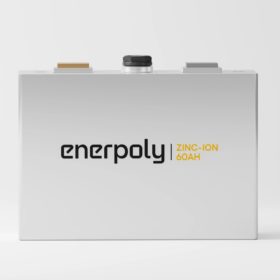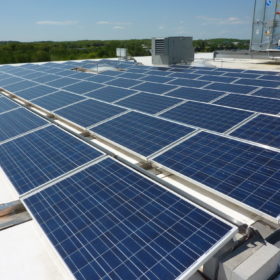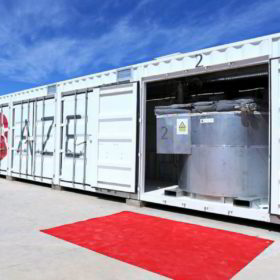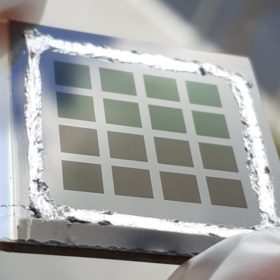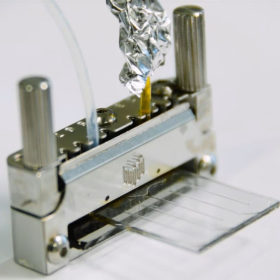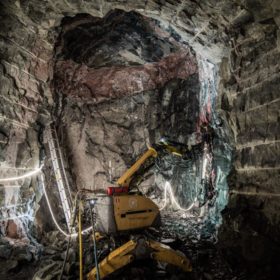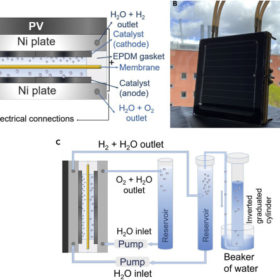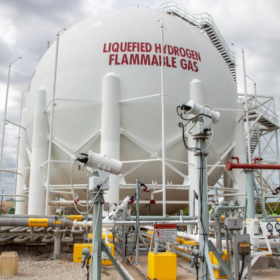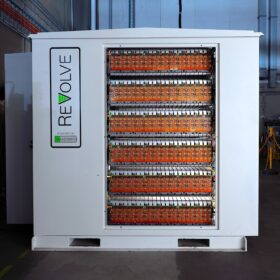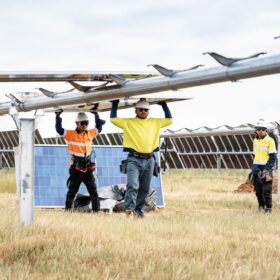Zinc-ion batteries for residential applications
Enerpoly produces low-cost, low-maintenance zinc-ion battery storage systems for durations of two to 10 hours. The Swedish battery specialist now plans to develop prototypes of a residential plug-in storage system with rechargeable zinc batteries in Europe, under an EU-funded collaborative project with Austrian startup EET.
AC vs. DC in residential buildings equipped with solar-plus-storage
Scientists in Sweden have compared AC and DC topologies in PV-powered buildings using battery storage. They have found that DC distribution systems can achieve energy savings when they are combined with solar-plus-storage systems.
Solar electric camper boat
The POL Lux from Sweden is a catamaran boat design with dual electric motors and a solar canopy that can covert into a private sleeping area.
Molten aluminium storage startup enters Australian market, apparently
In a decidedly confusing announcement, Swedish molten aluminium storage startup Azelio says it has secured a conditional order from relatively unknown Australian company MPG Built. Azelio says the order will see it provide “energy-as-a-service” using five of its TES.POD storage units combined with solar power.
Algae could boost solar panel efficiency by 4%
A Swedish team has inaugurated a pilot facility to mass produce algae material that can potentially boost silicon solar module efficiency by 4% and thin film by 36%. The algae are added to the encapsulant in silicon-based modules or to the anti-reflective coating on the glass of thin film modules. The team estimates the resulting modules would be 3.9% cheaper.
Silver-alloyed CIGS solar cell with transparent indium back contacts, 12% efficiency
Scientists in Sweden have developed a wide-gap ACIGS solar cell with hydrogen-doped indium oxide (IOH) transparent back contacts and silver alloying to increase the absorber bandgap energy. The device achieved an efficiency of 12.0%, an open-circuit voltage of 835 mV, a short-circuit current of 22.1 mA cm2, and a fill factor of 65.2%.
Molecular thermal energy system can store solar energy for 18 years
Developed by a Chinese-Swedish research group, the device is an ultra-thin chip that could be integrated into electronics such as headphones, smartwatches and telephones. It combines a Molecular Solar Thermal Energy Storage System (MOST) with a micro-fabricated system that includes a thermoelectric generator (TEG) with a low-dimensional material-based microelectromechanical system (MEMS).
Rock cavern for green hydrogen storage takes shape in Sweden
Vattenfall, SSAB and LKAB have reached the halfway point in the construction of a rock cavern storage facility in a coastal city in northern Sweden. The 100-cubic-metre facility is being constructed 30 metre below ground and will begin storing green hydrogen next year.
Thermally integrated PV-electrolyser with 9.1% solar-to-hydrogen efficiency
A Swedish research group has developed a device combining CIGS thin-film solar modules and an alkaline electrolyser based on a trimetallic cathodic catalyst made of nickel, molybdenum, and vanadium (NiMoV) and an anode made of nickel oxide (NiO). The electrolyser achieved an average solar-to-hydrogen (STH) efficiency of 8.5% for stable operations during 100 hours.
Large-scale storage options for compressed hydrogen
Researchers from Finland and Sweden have reviewed different ways to store compressed gaseous hydrogen, including storage vessels, geological storage, and other underground options.
